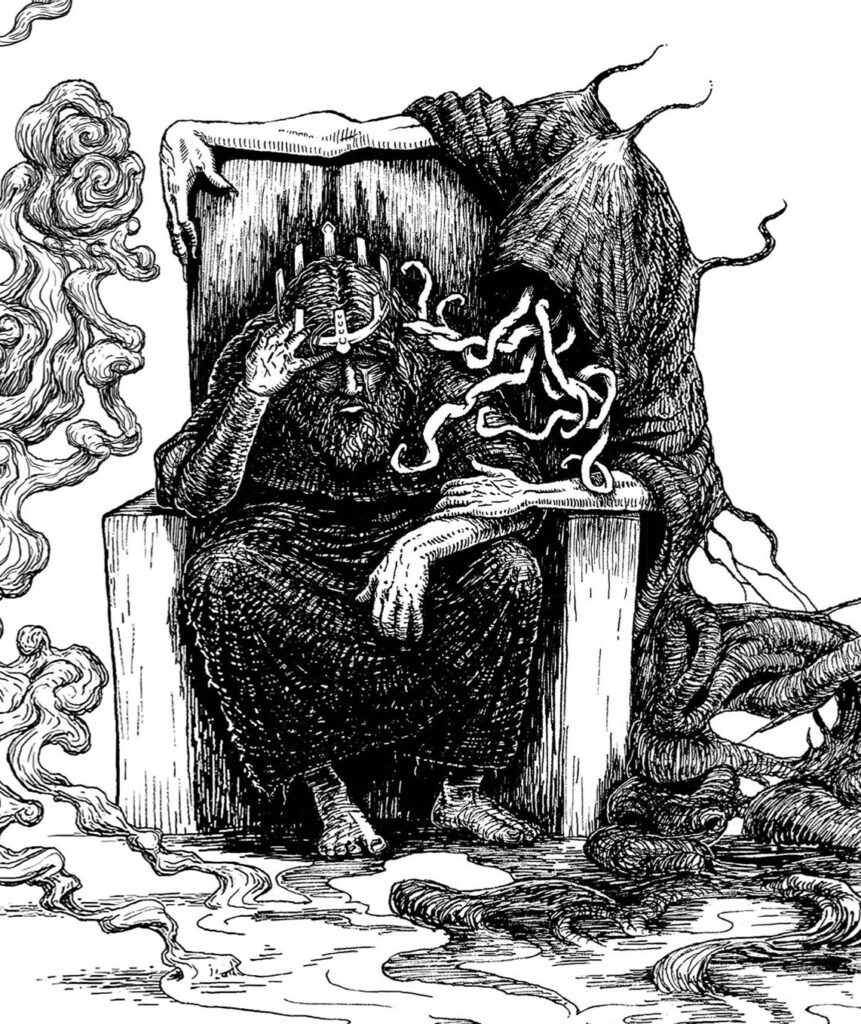I was looking up something else in Cleasby & Vigfusson’s Old Norse dictionary when my eye fell on gríma, meaning “a kind of hood or cowl”; by extension “the night”. A lot of badasses, starting with Óðin, are called Grímr (e.g. Þorgrímr, Steingrímr, Hallgrímr, Grímulf, etc). The root appears in women’s names with the -a ending: Gríma, Hallgríma, etc. C&V add “a serpent in poetry is called grímr“.
I always assumed these tough-guy names were cognate with English grim, and there may be some kind of connection, but English grim seems more directly related to ON gram “angry” (also the name of Sigurð‘s sword and Hrolf Kraki’s dog).
I’m sure Tolkien had ON gríma in mind when he named Wormtongue (a.k.a. Gríma), Théoden’s Unferthian evil counsellor.

